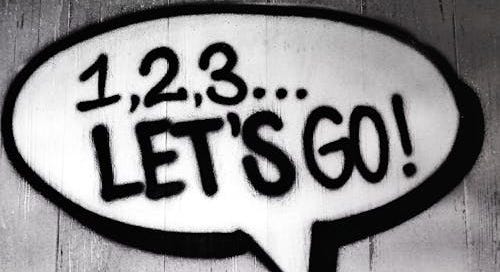Professional advice: Brevity is key (but don't be fooled)
Depth and nuance still matter in the age of TL;DR
Brevity - the king of communications?
We live in a time when attention is the ultimate currency, and brevity feels like the only way to pay. Short tweets, punchy headlines, and bite-sized videos dominate the landscape. “Keep it short and sweet” has become the golden rule for communication.
Everyone swipes and scrolls, looking for something to catch their eye, or hoping to inhale information fast.
But brevity can backfire.
Being too brief is easy for consumption but it can
trivialize important ideas
mislead your audience
rob your work of impact
In our quest to keep things short, are we sacrificing meaning?
The power of brevity
Brevity is popular for a reason. It works.
A snappy headline grabs eyeballs. A concise email gets responses. People love bite-sized content because it’s quick, easy, and instantly gratifying.
Think of an iconic slogan like Nike’s “Just Do It.” It’s powerful, memorable, and packs a punch in just three words. Brevity has the unique ability to distill complex ideas into something relatable and digestible.
But brevity has limits. A great slogan might spark curiosity, but it can’t explain a brand’s entire philosophy. That’s where the cracks start to show.
Downside of brevity
When brevity is overused, it stops being effective and starts being dangerous.
🔷 Loss of depth
Not every idea can be squeezed into a sentence.
Complex topics like climate change, mental health, or gender inequality require nuance. Reducing them to catchy phrases oversimplifies the problem and undermines meaningful solutions.
Imagine trying to explain the intricacies of a novel in a single tweet. Sure, you might capture the plot in a few words, but what about the characters’ growth, the subtle themes, and the emotional resonance? Brevity can strip away layers of meaning, leaving only the skeleton of an idea, risking misrepresenting the truth and doing a disservice to the subject.
🔷 Misinterpretation
A tweet with no context can spark outrage or misinformation. Brevity often sacrifices clarity, leaving room for assumptions and misreadings. Remember when a short clip went viral, but the full story revealed the opposite of what people assumed?
The shorter the message, the more room there is for misunderstanding. Context matters, and brevity often removes it entirely. A single sentence pulled from a speech can ignite controversy when viewed out of context. Without nuance, the message becomes a blank canvas for people’s assumptions, which can lead to confusion or even backlash.
🔷 Superficial engagement
Brevity encourages scrolling, not thinking.
People might “like” your work, but will they remember it? Shallow engagement creates fleeting impressions, while deeper content builds loyalty and trust.
In a world of endless scrolling, brevity encourages quick consumption rather than meaningful reflection. People might skim your content, like it, and move on without ever truly engaging. Shallow interactions inflate vanity metrics, showing you lots of little 💗💗💗💗💗💗💗💗💗💗💗💗💗💗💗 but they rarely build the lasting relationships or loyalty that come from deeper connections.
Brevity wins the moment. Depth wins the heart.
Depth and nuance still matter
When everyone’s talking about getting people’s attention quickly, here’s where you take the contrarian view. Going against this professional advice is an act of defiance, and this is more important now than ever.
Depth is where trust lives and nuance is where connections thrive.
That’s how you walk the path to true transformation.
✅ Building authority
When you take the time to explore a topic in depth, you show your audience that you’re not just skimming the surface. You’re demonstrating expertise, care, and a commitment to understanding the complexities of the subject. This builds trust, positioning you as a reliable source of insight in a sea of oversimplified content.
The deeper you dive into a topic, the more authority you build. Your audience sees you as someone who understands the complexities and doesn’t shy away from tackling them. Depth encourages readers to stop, think, and reflect.
✅ Creating lasting impact
Depth resonates in a way brevity never can. Think about a powerful novel or an in-depth article that left you thinking for days. That’s the kind of content that leaves a mark. When you dive deep, you give your audience something to chew on, ideas they’ll revisit, discuss, and share.
✅ Respecting your audience
Nuance tells your audience that you believe they’re intelligent enough to handle complexity. It respects their time and attention by offering more than just surface-level insights. It tells them, “I value your time and intelligence enough to go beyond the obvious.” That respect fosters loyalty and builds a genuine connection.
Consider a well-written long-form blog post. It doesn’t just skim the surface. It explores ideas, tells stories, and leaves the reader feeling enriched. That’s the kind of content people bookmark, share, and return to again and again.
To brief or not to brief
You don’t have to choose between brevity and depth. You can use both. They can work together to create powerful, effective communication.
✅ Start with a hook
Use brevity to grab attention. A sharp opening line or a punchy headline pulls readers in and makes them curious to learn more. It’s your chance to spark interest and keep them intrigue enough to keep reading.
✅ Expand with depth
Once you’ve hooked your audience, deliver substance. Take the time to explain, explore, and unpack your ideas. Share stories, provide data, and offer real-world examples to support your points. Depth is what transforms a curious reader into a loyal one.
✅ Prioritize clarity over simplicity
Being concise doesn’t mean dumbing things down. Focus on making your ideas clear, not just short.
Simplicity isn’t always the goal. Instead, aim for clarity. Express your ideas in a way that’s easy to understand without sacrificing complexity. Use clear, straightforward language to explain even the most intricate concepts, ensuring your audience follows and appreciates your message.
This balance of brevity and depth ensures that your work grabs attention, holds it, and leaves a lasting impression. It’s not about choosing one over the other. It’s effectively combining the two and using them to create thoughtful masterpieces that people can’t get enough of.
Conclusion
Brevity delights readers, but depth resonates with them. It’s time to stop treating short-form content as the only king of communication. Ask yourself whether you are delivering value, or just scratching the surface? Next time you write, keep this in mind:
Your words should create depth, not noise.
Dare to fail so you can dare to win - Moon AricaExpand your comfort zone here, tell me your thoughts:
Do you prefer to write long form or short form content?
What’s the most number of words you’ve written per article?
Articles on writing:
Thanks for reading.










It is good advice to keep things brief and concrete. Don’t make the reader do the work. I love the clarity and coolness of Camus. On the other hand, Hemingway brings me out in a rash. His “simplicity” strikes me as bogus and unconvincing.
Rules are meant to be broken. While it is advisable for lesser mortals to be concise and use words everybody knows, I love it when Anthony Burgess sends me to the dictionary by producing some exotic word; or Larence Sterne sends me off on some weird digression. I love Joyce. I love Robert Burton’s Anatomy of Melancholy, which is far from simple and concise.
This is awesome! Brevity is the key